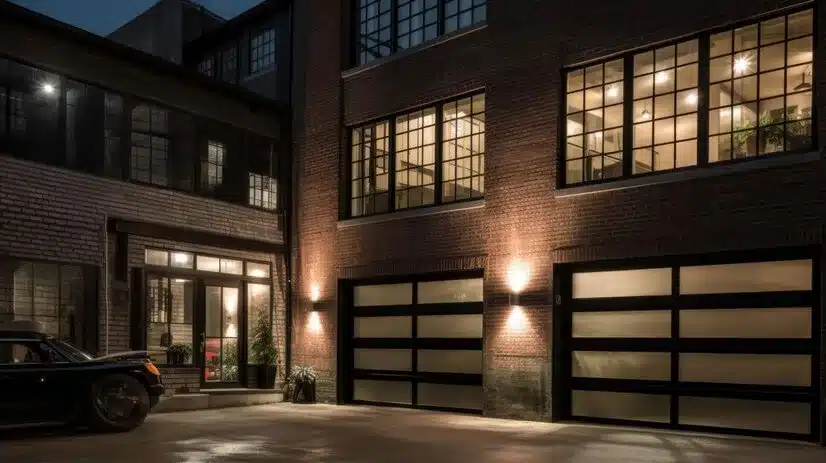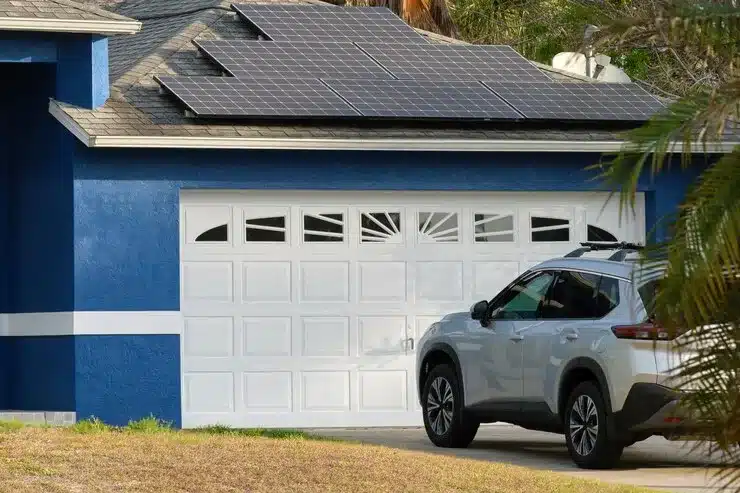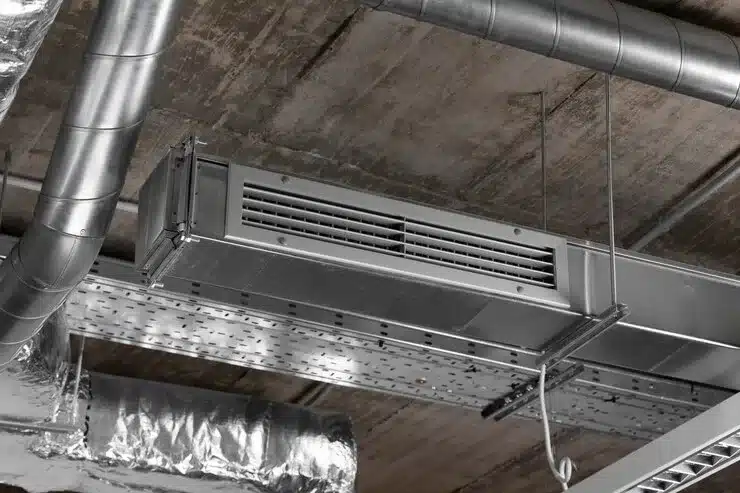
Converting a garage into a living space offers homeowners an eco-friendly opportunity to expand their homes. With careful planning and green building techniques, a garage conversion can increase a home’s functionality and value while minimizing its environmental impact.
This article outlines ten tips for green garage conversions that utilize sustainable design, energy efficiency, and non-toxic materials. Following these guidelines helps homeowners in the San Francisco Bay Area maximize usable space and minimize their ecological footprint when repurposing their garages.
The top ten eco-friendly strategies range from strategic insulation installation to renewable energy integration.
What Is an Eco-Friendly Garage Conversion?
An eco-friendly garage conversion incorporates sustainable and energy-efficient elements into the redesign of an existing garage space. The goal is to reduce the overall environmental impact while creating a functional living area.
Use of Natural Lighting
Maximizing the use of natural lighting is a key part of an eco-friendly conversion. Installing large windows, skylights, and solar tubes helps bring in natural light and reduces the need for artificial lighting during the day. Using natural lighting improves energy efficiency and creates a bright, open space.
Improved Insulation
Adding insulation, especially in the attic and garage doors, helps improve the energy efficiency of the converted space. Foam board, cellulose, and spray foam insulation are excellent options for garage conversions. Improved insulation results in lower heating and cooling costs over the lifetime of the home.
Reclaimed or Sustainable Materials
Using reclaimed wood, bamboo, cork, and other sustainable materials is an environmentally friendly choice for flooring, walls, and ceilings. These materials are durable yet renewable and help give the space a rustic, natural feel. Using materials that would otherwise end up in a landfill is an eco-friendly option.
Energy Efficient Appliances
Choosing Energy Star-rated appliances, heating/cooling units, lighting, and other products improves the overall energy efficiency of the converted garage. Although these products may cost slightly more upfront, the long-term energy savings and environmental benefits are substantial.
Converting a garage into a livable space in an eco-friendly manner requires careful planning and a commitment to sustainability. By maximizing natural lighting, improving insulation, using sustainable building materials, and choosing energy-efficient appliances, homeowners can create an energy-efficient and environmentally friendly living space.
Top 10 Tips for an Eco-Friendly Garage Conversion

Use Energy-Efficient Materials
When converting a garage, choose materials that improve the energy efficiency of the space. Things like additional insulation, energy-efficient windows, and Energy Star-rated appliances and fixtures can help reduce energy usage. Using recycled and reclaimed materials is also an eco-friendly option.
Install Solar Panels
Adding solar panels to the roof of a garage conversion is an excellent way to utilize renewable energy and reduce electricity bills. Excess energy produced by the panels during the day can even be sold back to the utility company.
Choose Eco-Friendly Flooring
Select flooring materials that are sustainable and durable like bamboo, cork, linoleum, or recycled rubber. These materials are renewable, long-lasting, and emit few volatile organic compounds. Avoid vinyl, carpet, and laminate which are less environmentally friendly.
Use Natural Lighting
Add skylights, windows, and glass doors to bring in natural light which helps reduce the need for artificial lighting during the day. Using natural lighting improves energy efficiency and creates a bright, open space.
Install Energy Efficient Lighting
When artificial lighting is needed, choose LED light bulbs which consume less energy and last longer than incandescent bulbs. Dimmer switches, motion sensors, and timers can also help reduce excess lighting.
Add Ventilation
Proper ventilation improves indoor air quality and reduces the risk of mold growth in the converted space. Energy-efficient ceiling fans, exhaust fans, and operable windows encourage air flow and circulation.
Use Low-Flow Plumbing Fixtures
Install low-flow or dual flush toilets, faucets, and shower heads to conserve water. These fixtures use less water which saves money and natural resources.
Choose an Eco-Friendly Heating/Cooling System
Select an energy-efficient HVAC system like a heat pump to heat and cool the converted garage space. Programmable thermostats can also improve efficiency by more accurately controlling the temperature.
Reduce, Reuse, and Recycle
Make an effort to reduce waste, reuse materials, and recycle as much as possible during the conversion process. Donate or repurpose leftover materials and properly recycle items that can not be reused.
Consider the Environment
An eco-friendly garage conversion should aim to reduce environmental impact. Make sustainable choices and be mindful of how the conversion may affect factors like energy usage, water consumption, and materials waste. Small changes can make a big difference.
Choosing Sustainable Materials for Your Garage Conversion

When converting a garage into a living space, homeowners should consider using sustainable and eco-friendly materials. Choosing materials with a minimal environmental impact helps to reduce pollution and waste.
Reclaimed or Recycled Materials
Using reclaimed or recycled materials is an excellent way to make a garage conversion more sustainable. Reclaimed wood, such as barn wood or fencing, can be used for flooring, paneling, and trim. Recycled metal panels or siding and reclaimed brick are other options. These materials reduce the need for harvesting new resources.
Low-VOC and Natural Paints and Finishes
Traditional paints, stains, and varnishes release volatile organic compounds (VOCs) that can be harmful to human health and the environment. Low-VOC and natural options, such as milk paint, beeswax, and plant-based oils and waxes, are eco-friendly alternatives that produce little to no VOCs. They provide durable protection for walls, floors, cabinetry, and trim.
Energy-Efficient Windows and Insulation
Installing energy-efficient windows, additional insulation, and sealing and weatherizing the garage space helps make the conversion sustainable. These improvements reduce energy usage for heating and cooling, which lowers utility costs and the home’s overall environmental footprint.
Using sustainable and eco-friendly materials may cost slightly more upfront but provides benefits for years to come. An energy-efficient, environmentally friendly garage conversion helps ensure a healthy, responsible, and sustainable living space for homeowners and the planet.
Focusing the renovation around reclaimed, natural, and recycled materials is an easy way to make a garage conversion project sustainable.
Incorporating Energy Efficient Design Elements

To maximize energy efficiency in a garage conversion, several design elements should be incorporated. Insulation is key to controlling temperature and reducing utility costs. Adding insulation to the walls, ceiling, and floor of the converted space will help maintain comfortable temperatures year-round. For the walls, dense-packed cellulose or spray foam insulation are excellent eco-friendly options.
High-Efficiency Windows
Replacing any existing windows with double or triple-paned windows provides enhanced insulation. Look for windows rated as ENERGY STAR® certified to ensure optimal energy efficiency. These highly efficient windows can significantly reduce heat transfer and lower heating/cooling costs.
LED Lighting
Converting to LED light fixtures and bulbs is one of the easiest ways to improve efficiency and reduce energy usage. LEDs consume a fraction of the energy of incandescent bulbs and last up to 25 times longer. They also produce very little heat compared to traditional bulbs. For a garage conversion, recessed LED fixtures or track lighting provide ample illumination while allowing for a custom lighting design.
Smart Thermostat
A programmable smart thermostat enables customized temperature control to maximize comfort and energy savings. Smart thermostats can be adjusted remotely using a mobile app and many models learn usage patterns over time to optimize the temperature.
During unoccupied hours, the thermostat can automatically adjust to an energy-saving setpoint. For a garage conversion, a smart thermostat may yield significant cost savings, especially if it is not continuously occupied.
Implementing these and other eco-friendly design elements, such as natural ventilation, renewable materials, and water efficiency features, will help ensure an energy-efficient and sustainable garage conversion. Homeowners can enjoy the additional living space with a minimal impact on utility costs and the environment.
Maximizing Natural Light and Ventilation

Maximizing natural light and ventilation is essential for an eco-friendly garage conversion. Installing large windows, skylights, and vents will help reduce energy usage by decreasing the need for artificial lighting and cooling.
Adding skylights and windows along the walls of a garage conversion allows plenty of natural light to filter into the space during the day. For garages with limited wall space, installing skylights provides an excellent source of overhead lighting. Skylights and windows should face in the direction of maximum sun exposure for the location.
Proper Ventilation
In addition to allowing natural light into the space, windows, and vents provide necessary ventilation and airflow. Operable windows and vents give occupants control over the temperature and circulation in the room. For garages, installing vents and fans to extract vehicle fumes and pollutants from the structure before conversion is required. Rooftop vents and exhaust fans can also help reduce heat build-up in the attic space above the garage.
Energy Efficiency
By maximizing natural light and ventilation in an eco-friendly garage conversion, the need for artificial cooling, heating, and lighting is significantly reduced. This results in greater energy efficiency and lower utility costs for the homeowner. The strategic use of passive solar design principles and energy-efficient windows and skylights further helps minimize the carbon footprint of the conversion.
Overall, increasing natural light and ventilation through the use of skylights, windows, vents and fans helps create an eco-friendly garage conversion by reducing energy usage and providing a comfortable living space. With some planning, a garage can be successfully converted into an energy-efficient and sustainable home addition.
Conclusion
Converting your garage into an eco-friendly living space provides numerous benefits for both you and the planet. By implementing sustainable practices and materials, you can reduce your environmental impact while still gaining valuable new space in your home. With careful planning and design considerations, a garage conversion can be an affordable, rewarding project that supports your green values.
Whether you decide to add an art studio, home office, or guest suite, an eco-friendly garage conversion allows you to repurpose existing infrastructure in a responsible, creative way. By following the tips and recommendations outlined here, San Francisco Bay Area homeowners can build the optimal green garage conversion to suit their needs and lifestyle.
At Rhino Garage Conversion San Francisco, we are committed to helping you bring these green ideas to life. Our expertise in eco-friendly conversions ensures that your project will not only meet your needs but also contribute positively to the environment. Let us guide you through the process and help transform your garage into a sustainable, functional, and comfortable space.

